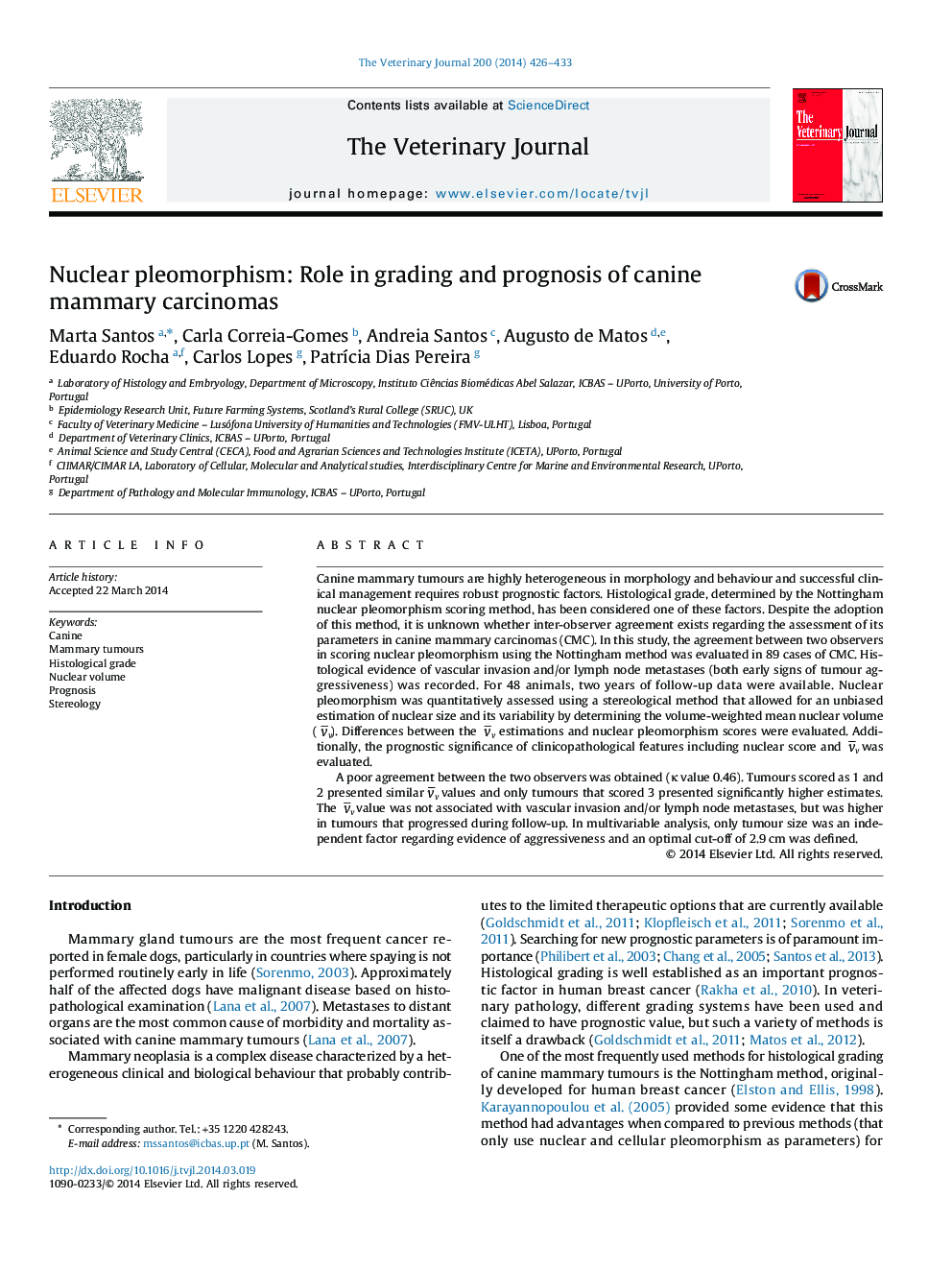| Article ID | Journal | Published Year | Pages | File Type |
|---|---|---|---|---|
| 2463949 | The Veterinary Journal | 2014 | 8 Pages |
Canine mammary tumours are highly heterogeneous in morphology and behaviour and successful clinical management requires robust prognostic factors. Histological grade, determined by the Nottingham nuclear pleomorphism scoring method, has been considered one of these factors. Despite the adoption of this method, it is unknown whether inter-observer agreement exists regarding the assessment of its parameters in canine mammary carcinomas (CMC). In this study, the agreement between two observers in scoring nuclear pleomorphism using the Nottingham method was evaluated in 89 cases of CMC. Histological evidence of vascular invasion and/or lymph node metastases (both early signs of tumour aggressiveness) was recorded. For 48 animals, two years of follow-up data were available. Nuclear pleomorphism was quantitatively assessed using a stereological method that allowed for an unbiased estimation of nuclear size and its variability by determining the volume-weighted mean nuclear volume (v¯v). Differences between the v¯v estimations and nuclear pleomorphism scores were evaluated. Additionally, the prognostic significance of clinicopathological features including nuclear score and v¯v was evaluated.A poor agreement between the two observers was obtained (κ value 0.46). Tumours scored as 1 and 2 presented similar v¯v values and only tumours that scored 3 presented significantly higher estimates. The v¯v value was not associated with vascular invasion and/or lymph node metastases, but was higher in tumours that progressed during follow-up. In multivariable analysis, only tumour size was an independent factor regarding evidence of aggressiveness and an optimal cut-off of 2.9 cm was defined.
